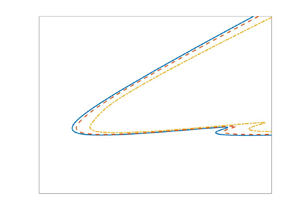Article contents
Control of stationary convective instabilities in the rotating disk boundary layer via time-periodic modulation
Published online by Cambridge University Press: 24 August 2021
Abstract

The control of stationary convective instabilities in the rotating disk boundary layer via a time-periodic modulation of the disk rotation rate is investigated. The configuration provides an archetypal example of a three-dimensional temporally periodic boundary layer, encompassing both the von Kármán and Stokes boundary layers. A velocity–vorticity formulation of the governing perturbation equations is deployed, together with a numerical procedure that utilises the Chebyshev-tau method. Floquet theory is used to determine the linear stability properties of these time-periodic flows. The addition of a time-periodic modulation to the otherwise steady disk rotation rate establishes a stabilising effect. In particular, for a broad range of modulation frequencies, the growth of the stationary convective instabilities is suppressed and the critical Reynolds number for the onset of both the cross-flow and Coriolis instabilities is raised to larger values than that found for the steady disk without modulation. An energy analysis is undertaken, where it is demonstrated that time-periodic modulation induces a reduction in the Reynolds stress energy production and an increase in the viscous dissipation across the boundary layer. Comparisons are made with other control techniques, including distributed surface roughness and compliant walls.
JFM classification
- Type
- JFM Papers
- Information
- Copyright
- © The Author(s), 2021. Published by Cambridge University Press
References
REFERENCES
- 3
- Cited by



